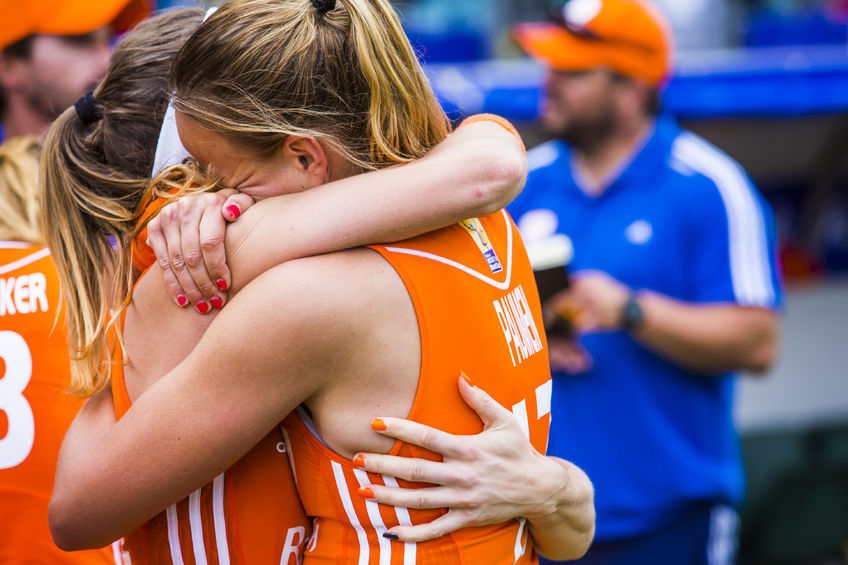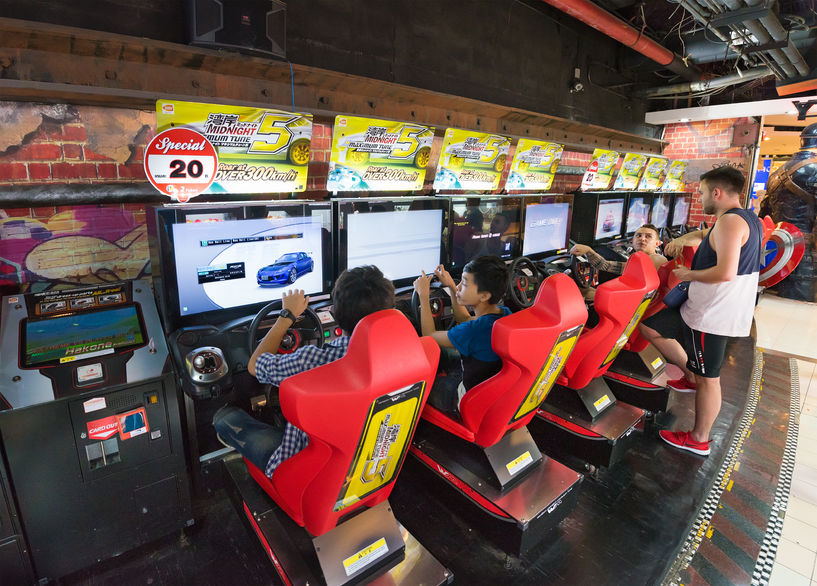The “Movement” Movement.
By Wayne Goldsmith
OK – before I start what is no doubt going to be a highly controversial post, let me say this.
Do I believe that what I call the “Movement” Movement – i.e. the mass popularization of movement (physical) literacy programs for kids in sport all over the world makes sense?
Yes.
Do I believe that teaching kids how to move “correctly” and to move efficiently is important to help them realize their sporting potential, minimize injuries and optimize performance?
Yes.
But…do I also believe that the world wide obsession with the “Movement” Movement and physical literacy is contributing to killing junior sport across the globe?
Yes.
Let’s talk about the “Movement” Movement.
What is the “Movement” Movement?
When the sporting world bought into the “pathway” model, the next challenge became to develop systems and programs to “populate” the pathway.
The underlying assumption of the “pathway” theory is that athletes would systematically and methodically progress along the pathway from their first lessons and sessions to eventual gold, glory and success as elite level competitors.
To achieve this pathway progression, sports have developed systems and syllabuses of physical, mental, technical, strategic and lifestyle skills elements which are age and / or stage specific depending on where they are on the pathway.
For example as a beginner, a young athlete might learn how to stretch correctly and to complete body weight resistance exercises.
At the next “stage” of the pathway, the athlete learns higher level, more advanced skills like basic strength training, fundamental weight training techniques with light weights and so on.
Then, as they progress along the pathway, they are taught how to lift heavier weights, do plyometrics, how to build power and explosiveness etc. with the aim of eventually equipping them with the tools and techniques they’ll need to complete an elite level strength training routine as a senior athlete.
Again – this all makes common sense and it’s logical….but….
ONLY if the athlete has the intention of becoming an elite level senior athlete.
And this is where the Movement Movement is failing sport.

Why is the Movement Movement Failing Sport?
There are five reasons why the Movement Movement is failing sport.
- Very very few kids who play sport want to – or need to – become elite athletes. Around the world the numbers of kids who are playing competitive sport is dropping at an alarming rate. There are fewer and fewer children committed to training for and competing in sport – particularly in Olympic sport. Does it really matter is they’ve been taught, through a physical literacy program, to run with perfect hip alignment if they’ve given up all running sports by the age of 13?
- The biggest issue sport is facing right now is the rapidly declining number of kids who are even playing sport – let along pursuing elite level competitive sport. I’m all for efficient movement but seriously…clubs, associations and sports are struggling to get kids to even turn up and kick footballs, swim laps, hit tennis balls, smash hockey pucks etc. etc. The most brilliantly designed physical literacy program in the world is of little use if there are no kids actually playing sport.
- The degree of precision involved in teaching physical literacy is completely out of touch with the way to engage young kids. I’ve seen a lot – and I mean a lot – of physical literacy program activities. Been to many many sessions all over the world over the past 20 years and I can tell you my impression in one word….BOR-ING. Way too many physical literacy practitioners are insistent on “textbook” perfection. The only person in the world who has “textbook” perfection is the person who’s demonstrating the technique in the actual textbook. I’ve seen some brilliant physical literacy practitioners but they place fun and laughter ahead of perfection in movement when working with young kids.
- There is no concrete evidence that involving kids in physical literacy programs makes them better elite level senior athletes. Sorry to say…physical literacy – like so many other things in sport that the world has slavishly bought into – is a theory. It’s a model that was and still is nicely packaged and marketed and sold to sports, to coaches, to governments and to parents all over the world. But in terms of indisputable evidence that athletes who complete physical literacy programs being more likely to win Olympic Gold medals or play professional football in the E.P.L…there’s nothing.
- The “purist” physical literacy educators may know movement – but most of them do not know kids. And above all – sport is no longer about pathways or progressively building a broad range of capabilities to help athletes be successful in senior level elite competition. The critical issue right now is finding ways of just getting kids moving – even if that moving is not perfect or technically textbook terrific. With the rapidly dwindling pool of kids even commencing a connection with competitive sport – the emphasis right now needs to be on creating interesting, enjoyable, exciting sports experiences which put smiles on their faces and has them screaming excitedly to mum and dad….“I want to come back next week”.
Summary:
Once again, do I think the Movement Movement is a good “move” for athletes and coaches looking to develop the skills and capabilities to move efficiently and effectively as senior elite level athletes? Yes – it’s basically a great concept.
However, right now, the last thing sport needs is a bunch of people in the industry pushing and promoting a philosophy that insists on slow, precise, exact movements in the interest of maybe one day seeing some kid play professional sport or break a world record.
Sport needs fun. It needs families. It needs community connection. It needs people just getting off their butts and doing stuff.
It doesn’t need people selling programs that teach 8 year old kids to do a perfectly controlled one legged squat with a “switched-on” rectus abdominus.
What good is having millions of kids who have great hip alignment and excellent core stability but they’re all at home sitting on the sofa eating potato chips and drinking Cokes because the actual experience of developing these outstanding movement qualities was dull, boring and completely disengaging?
The challenge to the “Movement” Movement people is to develop something that still works – but something that engages the hearts and minds of kids so that it excites them – entertains them and encourages them to do the one thing we really want them to do…..MOVE.
Wayne Goldsmith
Tags In
Related Posts
3 Comments
Leave a Reply Cancel reply
Categories
- Athlete Development (3)
- Coach Development (1)
- New Sport (10)
- Sports Parenting (1)
- Sports Participation (1)
- Sports Science (1)
- Sports Systems (4)







Hi Wayne,
Does this post refer to the ‘movement movement’ (MM) that is happening within sporting organisations only or are you casting a broader brush across PE programs as well? I firmly believe the MM is sadly lacking in our schools. Programs that focus on the functionally competent transferring existing skills to new contexts cater to a minority and miss those that are in most need. What is truly life-long, sporting involvement or movement competence/ independence? Isn’t their inherent enjoyment in becoming increasingly physically competent and competent? Are we on opposite sides or fighting separate wars? I’ve been a PE teacher for 24 years and changed to a movement centered curriculum over 10 years ago, with dramatic effect. I’d be interested to know your thoughts and I will continue to follow your blog with interest.
Hi James.
Thanks for the comment.
I feel PE teachers are doing a great job in a very tough environment – and anything you can do to get kids actually moving – running, jumping, throwing, learning to balance, improving co-ordination etc. is time well spent.
My comments are really directed at the large number of sporting organizations who have bought into the philosophy of movement “perfection” – that all kids must be taught at an early age to move with technical excellence, great core and posture control and with textbook perfect running technique.
We’ve got sports coaches now who – instead of connecting with kids, creating enjoyable learning environments and building effective coaching programs spend all their time looking at pelvic stability and abdominal core control.
There’s no evidence that physical literacy programs either increase the number of kids playing sport or decrease the drop out rates and right now these are way bigger issues than whether or not a ten year old has perfect hip alignment and scapula stabilization.
Every sport in Australia, NZ, Canada, UK and most parts of the world – particularly the Olympic sports in rural and regional areas – is struggling just to get kids to turn up and do something – anything – just move, play, be active – do something!
The kids who do turn up need to be enjoying the experience, having fun, hanging out with friends – and not be subject to rigid, precise movement literacy programs which are all too often delivered poorly without imagination, demanding the development of exact movement patterns and with the execution of “correct” techniques based on strict syllabi.
Teachers get it.
You’re trained to engage kids and help them to learn, grow and improve.
Unfortunately most people in the sports industry don’t get it. They’ve been sold the physical literacy stuff by the Movement Movement people as the one size fits all, essential program that will turn every child into a champion because they’re learning to move precisely, correctly and perfectly.
I’ve got nothing against learning to move correctly but right now the issues are so much bigger: we’ve got a world wide decline in the number of kids turning up to play competitive sport, huge drop-out rates and in some places – in some sports – the potential demise of competitive sport all together.
It’s different with serious, committed, competitive athletes: let’s encourage the Movement Movement people to go nuts with them.
I am talking more about just getting kids active, healthy and playing sport for fun.
The Movement Movement people need to think broader – understand the context of the real challenges the industry is facing and adapt accordingly.
Thanks again for your interest.
WG
Hi Wayne, thanks for the detailed reply. I thought I had you understood correctly but thank you for the added clarity. The scenario you paint in those sporting organisations sounds positively awful. Bring back the fun, build the community, get people involved. Sounds rock solid. Cheers.